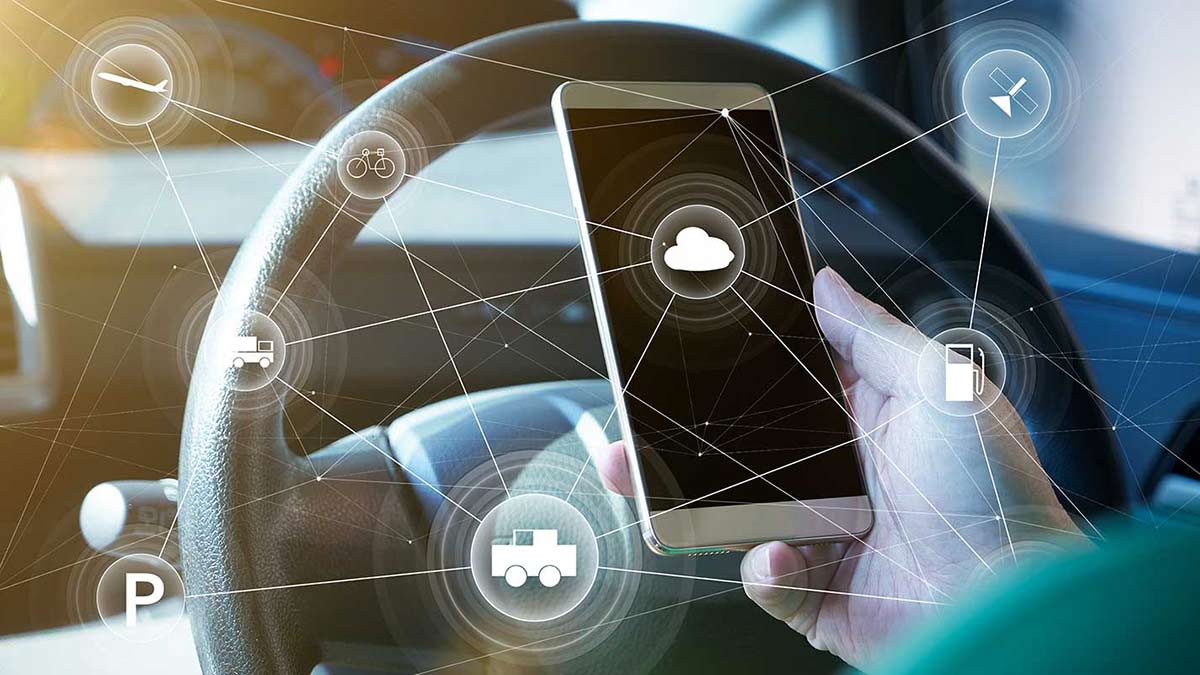A record number of new cars were sold in Australia in 2024, thanks to strong growth in hybrid and plug-in hybrid electric vehicles in key segments including small and medium SUVs. Utes and EVs also remained popular.
9 future car trends

The automotive world is going through its biggest change since the horse and cart was ditched for a world on wheels.
The promise of self-driving cars and the imminent electrification of vehicles is forcing carmakers to think quickly and adapt. All of which means the cars we’ll be driving in the near future will be very different to those on the road today. Here are nine trends that will shape the cars of tomorrow.
9 car trends for the future
The connected car
Smartphones have changed our lives, and they're about to change your car. Tesla owners already use their phones as a key, and that's a trend likely to accelerate. BMW is another that offers phone-as-a-key tech on some models. But smartphones will also increasingly be used to stay in touch with your car, whether it’s to warn of someone trying to break in, or trying to lock the doors.
Phone apps will also increasingly allow you to cool or heat the cabin before returning to the car, book a service, or easily send a navigation address to the car.
Electric motors
There’s lots of hype around electric motors, but the reality is most Australians will likely still be pumping petrol or diesel into their new cars five years from now. That said, they will be using less of it. Even cars powered by an internal combustion engine are increasingly turning to electricity for assistance.
Mild hybrid systems may reduce fuel use by two or three per cent, while regular hybrids can halve your fuel bills. Series hybrids systems such as Nissan’s upcoming e-Power and Mazda’s rotary range extender will also give people the electric car driving experience, but with a petrol engine to create the electricity. And, of course, there will be no shortage of pure electric cars heading our way.
Leather-look, hold the cow…
Tesla was the first to offer a vegan interior with a material that vaguely looks like leather.
And while Audi, Mercedes-Benz and BMW have long offered fake leather finishes on various models, some of the glues used in the car means that most can’t yet claim to have vegan cars. But they are coming, and the pushback on finishes sourced from animals is in full swing. Mini is ditching leather altogether, and Volvo isn't using it in the company's electric vehicles (EV). Porsche even charges thousands of dollars extra for the 'leather-free interior' option on its Taycan EV.
Getting better over time
Fine lines often improve over time. Cars don’t. Or, at least, they haven’t. But that’s set to change.
Software updates are often performed when your car is in for service, but over-the-air updates mean that functionality can happen whenever your car is connected to a mobile or Wi-Fi network. As well as bug fixes, over-the-air updates can add new features and functions that, in some instances, can improve the car over time. Throw artificial intelligence into the mix – the ability for the car to learn and adapt to its occupants and environment – and it makes for an exciting future.

Driver assist technology is becoming more common in new cars, but fully autonomous vehicles are a while off
Hit subscribe
We’re used to paying for TV streaming services, phone plans and music. Now carmakers want to get in on the subscription act. Some have begun offering subscriptions to features already fitted to the car. It could be heated seats, or a driver assist system such as semi-autonomous freeway driving.
As well as giving carmakers an additional revenue stream once the car has left the dealership, it also simplifies production lines by reducing the different permutations of models being manufactured.
Staying safe
Cars are getting harder to crash. Driver assistance features are on the rise, aiming to make driving easier and safer. Assisted steering systems will get smarter, as will auto-braking systems. And expect things such as cross-traffic alert – front and rear – to make it easier to get out of blindside streets or angle car parks. As for fully autonomous vehicles, Tesla would like you to believe they’re here soon. But they’re many (many) years away. The tech is proving challenging, and the reality is you'll still be twirling the wheel for a long time yet.
The rise of China
Chinese brands have taken a while to hit their stride, but in 2021 sales have started to boom. GWM, LDV and MG now make up 6 per cent of sales between them. But the China influence extends beyond the brands themselves. These days Teslas are sourced from China, and BMW's upcoming iX3 is coming from a new factory in China. Many Volvos these days also come from China. We'll also see newcomer brands such as BYD and Polestar bringing in cars from China.
Bigger is better
Electric motors are smaller than petrol engines, which makes it easier to fit them in. It means cars designed from the outset as an EV can better accommodate humans. It also means cars of the future will have hints of Doctor Who’s Tardis: bigger on the inside than they look from the outside.
Utes growing
Utes now make up one in five new vehicle sales, and many believe there's growth left in it. And it’s the large American pickups that are shaping up to step up their presence. Already, locally-converted versions of the Ram 1500 sell in decent numbers, as well as the Chevrolet Silverado and Ford F-150. Electric versions of those three are likely to be on the menu, as are more of them. Toyota is one exploring ways to sell the Tundra in Australia.




